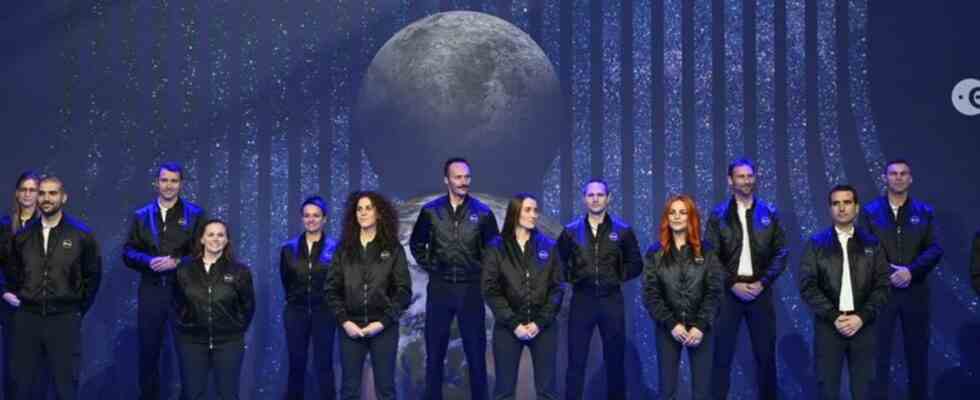space travel
The new ESA astronauts have been announced
The new cohort of astronauts will be presented at the ESA Ministerial Council meeting in Paris. photo
© Eric Lalmand/BELGA/dpa
After more than ten years, Esa is again taking on a training class for astronauts. When the new ones can fly into space for the first time is still in the stars.
The dream has come true for five Europeans: Frenchwoman Sophie Adenot, Spaniard Pablo Álvarez Fernández, British Rosemary Coogan, Belgian Raphaël Liégeois and Swiss Marco Alain Sieber form the new astronaut crew of the European space agency ESA. This was announced by ESA on Wednesday in Paris at the end of the ESA Council of Ministers meeting. But the stars are not yet within reach for the newcomers.
The training starts in Cologne
For the five lucky candidates, the Rhine lures in front of the universe. The one-year basic training is underway at the European Astronaut Center in Cologne, during which the crew learns the basics of natural sciences and engineering, learns Russian and also begins training for space flights. The newcomers then go through the approximately one-year advanced training course, during which they are made particularly familiar with the ISS space station and, for example, support their colleagues in space with ground control.
Only in the third phase of the training do the astronauts receive a specific mission and prepare for it. For about a year and a half, the future astronauts then deal with how the experiments of their mission are carried out and what the science is behind them.
The first flight is still a long way off
So it could easily take three years, if not longer, for the new Astro crew to take off into space. Matthias Maurer, for example, was accepted into the astronaut corps in 2017 and flew into space last November. His German predecessor, Alexander Gerst, was unveiled to the public in May 2009, began his training in September and then made it into space for the first time in 2014.
Where the new generation of astronauts will fly to is still in the stars. Because the future of the ISS is still uncertain. Russia had announced that it wanted to withdraw from the joint project after 2024. The US space agency Nasa feels obliged to keep the outpost in operation at least until 2030. Flights of an Esa astronaut to the moon could also be a long time coming. For example, missions to the “Lunar Gateway”, the planned station on the lunar orbit, would be possible.
Flight opportunities probably also for reserve astronauts
In addition to the five astronauts that Esa presented as so-called career astronauts, nine astronauts were also selected in reserve, including the Germans Amelie Schoenenwald and Nicola Winter. It could also go into space for them. Matthias Maurer, for example, was in the top ten of his applicant year, but initially not in the final selection, and was then nominated as an astronaut years later.
Part of the astronaut reserve will also be Briton John McFall, selected in the newly created position as an astronaut with a physical disability. McFall becomes part of a project to find out how to break down barriers in space travel. ESA boss Josef Aschbacher said they were willing to open space to everyone. You need special studies and possibly adjustments in space or on the way there.
Increased budget for ESA
ESA started the search for new astronauts last March. A total of more than 22,000 applications were received, almost 3,700 of them from Germany, 670 from Switzerland and 470 from Austria.
Increased budget for ESA
At the Paris meeting, the 22 member countries also decided on a significantly increased three-year budget for ESA of 16.9 billion euros. This is an increase of 17 percent compared to the previous budget.
Esa on astronaut training Esa questions and answers on manned space flight Esa information on applications Biography Alexander Gerst The future Esa astronauts and reserve astronauts Portrait of German reserve astronaut Amelie Schoenenwald

